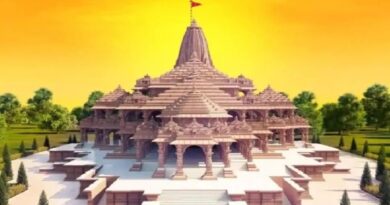Deity of Power: from commoners to politicians, everyone worships for strength and stamina: Dr. Birbal Jha
New Delhi, 30th September 2022: Navaratri spanning over nine nights and ten days beginning from 26th September is drawing a close on 5th October this year. This annual expression of reverence and adoration for the deity of power holds a great message for one and all living in this universe. Durga, the Goddess of power in Hindu rituals is incarnated on earth to exorcise demons and eliminate the forces of evil often by which our society is plagued. Such elimination is a social need for a more significant cause.
Great is India where such a series of rituals and festivals following the Indian cultural sphere are held in succession around the year with the aim of advancing the cause of mankind and securing the world as a conducive place to live. Promotions of human values and obliteration of evils have been the central point of such a practice since time immemorial. This gives us a shape of the life cycle, following dharma, more particularly in Hinduism.
Our society always worships the powers that be, whether it is spiritual, political, social or practical life. We remain in awe for any reason whatsoever. We go to the places of worship and pray to God and deities to give us strength and stamina to fight against all the odds and come victorious. It is human nature to seek the power either to endure or rule or lord it over others.
It won’t be out of place to mention that very recently, Union Home Minister Amit Shah was seen offering prayers at the Mata temple seeking blessings, seemingly for the retention of power and for the furtherance of the project he has embarked on, and expressing his gratitude to the Goddess. This is in line with what dharma and Karma say.
With Narendra Modi coming to power in 2014, what is seen is that the government began to give due attention to the accessibility, upkeep and beautification of temples and places of worship. The Kashi corridor is a case in point. The inauguration of the Ujjain corridor is due this October. The Ram temple in Ayodhya will be open to the public for darshan so soon. The countrymen must take pride in treasuring what has been glorious and defining for our lifestyles. The central, as well as state governments, have taken the initiative in this regard.
Through the democratic process, Prime Minister Modi is empowered to uphold the virtues and weed out what is unwanted around. Good is that Modi is unlike his predecessor who was the power behind the throne. With his leadership personality, he has been able to separate sheep from goats. Under his prime ministerial stint, the surgical strike on the terror camps in Pakistan on the night of 28 and 29 September 2016 is a sign of what power is and what it is meant for in line with the very purpose of Goddess of Power is incarnated as the supreme being to drive away the evil forces. Today, Modi is deified as the protector of Indian spirits and values. However; this author is not the one who worships the ground Modi walks on. He, too, was recently seen offering arti to the goddess Durga.
Close to New Delhi with the corridors of power is situated Kurukshetra in Haryana where in the epoch of Dwapar, Lord Krishna through verses 7 and 8 of chapter 4 of the Gita, says that He comes to earth to destroy the wicked and establish religion wherever there is a loss of religious conviction and the spate of inequality in society. He is there to protect the good-doers and discard the evil-doers.
Thus, we tend to be the devotees of the deity of power that can protect us, our land, our integrity, and our life, keeping the disintegrating forces at bay. Central to the ethos of Indian ways of life is to worship all that ease our existence and make life worthy.



